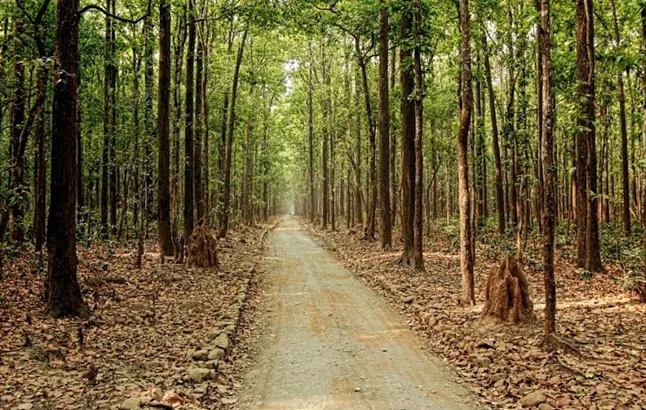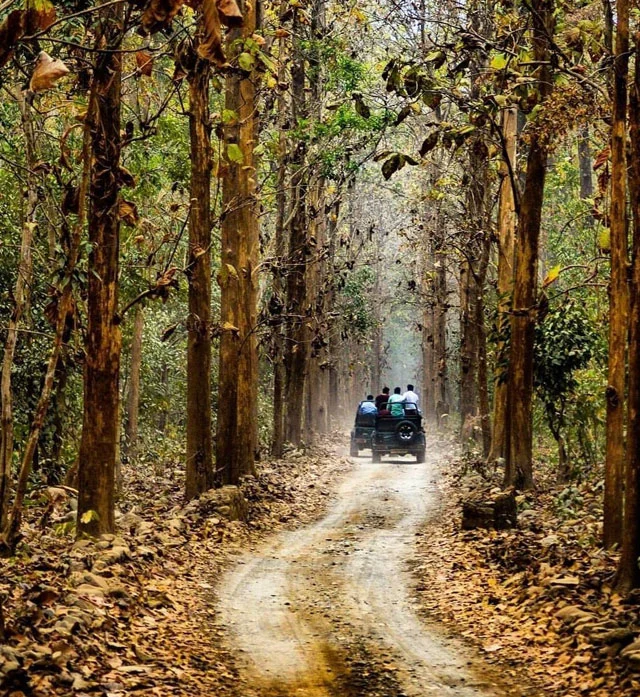Corbett National Park Flora
Located in the foothills of the Himalayas, Jim Corbett National Park is not just a tiger haven but also a botanical paradise. Covering more than 520 square kilometers between the districts of Nainital, Pauri, and Almora in the state of Uttarakhand, the park occupies the interface of the Sub-Himalayan zone and the Terai region, and thus the climatic and ecological zones are a blend unique in its kind. This diversity of geology creates an exceptionally rich floral assemblage. From dense Sal forests and moist deciduous woodlands to open grasslands and riparian vegetation, Corbett’s landscape is a living laboratory of plant life. The park is home to over 600 species of trees, shrubs, grasses, climbers, ferns, bamboos, and medicinal herbs, making it a crucial part of the broader Himalayan ecosystem.

These plants not only serve as food and shelter for a wide variety of animals—from elephants and deer to reptiles and birds—but also play a vital role in climate regulation, groundwater retention, and air purification. In every season, the park showcases a different face of its botanical beauty: vibrant blooms in spring, lush greenery during monsoon, and golden leaf-fall in winter. This rich flora also supports rare and endemic plant species, some of which hold cultural and Ayurvedic significance in local traditions. Together, the flora of Jim Corbett National Park forms the green backbone of its biodiverse landscape, ensuring ecological stability and enhancing the park’s allure for nature enthusiasts, researchers, and wildlife lovers alike.
Major Vegetation Types in Corbett National Park
1. Sal Forest (Shorea robusta)
The dominant forest type in Corbett, Sal trees cover about 75% of the area. These dense canopies are ideal habitats for deer, tigers, and elephants, offering both shade and food.
2. Mixed Deciduous Forests
Besides Sal, you’ll find a variety of mixed deciduous trees like Haldu (Adina cordifolia), Rohini (Mallotus philippensis), Semal (Bombax ceiba), and Bahera (Terminalia bellirica). These forests burst with seasonal color and provide vital nourishment for herbivores.
3. Riverine and Riparian Vegetation
Along the Ramganga, Kosi, and Sonanadi rivers, you’ll encounter water-loving trees like Jamun (Syzygium cumini), Ficus, and Willows, forming cool corridors that support fish, birds, and aquatic mammals.
4. Grasslands (Chaurs)
Known locally as “chaurs”, these open meadows are crucial grazing grounds for deer, elephants, and wild boars. These grasslands are also prime tiger-spotting zones.
5. Shrubs and Ground Flora
The undergrowth consists of species like Ber (Ziziphus), Lantana, and Chir Pine (Pinus roxburghii) in elevated areas. These support smaller mammals and bird species.
Key Flora Species in Jim Corbett
Jim Corbett National Park hosts a diverse range of flora, with dominant tree species like Sal, Khair, and Sissoo forming the backbone of its forests. Chir Pine grows at higher altitudes, while Bamboo forests thrive in patches across the park. Flowering trees like Kachnar, Amaltas, and Semal add seasonal color, and species like Ber and Haldu support both wildlife and ecological balance.
- Sal (Shorea robusta)
Haldu (Adina cordifolia)
Peepal (Ficus religiosa)
Semal (Bombax ceiba)
Rohini (Mallotus philippensis)
Bamboo clusters
Jamun (Syzygium cumini)
Dhak (Butea monosperma) – “Flame of the forest”

Explore the Flora with Nature Walks & Safaris
Book a nature trail or jungle safari with expert guides through Jim Corbett Adventures to experience the incredible flora firsthand—spot medicinal plants, flowering trees, and learn how the jungle breathes and sustains itself.
Conclusion
The flora of Jim Corbett National Park is more than just natural beauty—it is the lifeline of the park’s rich ecosystem. From dense Sal and Khair forests to bamboo groves, meadows, and riverine belts, each plant species plays a crucial role in sustaining wildlife and maintaining ecological balance. This rich vegetation not only supports biodiversity but also enhances the park’s scenic charm, making it a true natural treasure.
